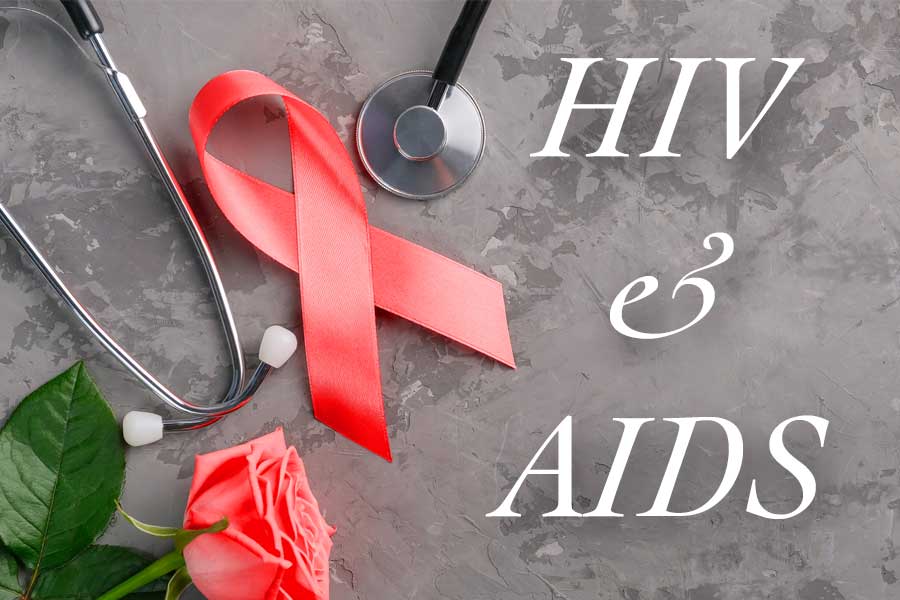Trusted for 25+ Years
Sexual Harassment & Stalking

Dr. Lisa Lawless, CEO of Holistic Wisdom
Clinical Psychotherapist: Relationship & Sexual Health Expert
 Stalking & Cyberstalking
Stalking & Cyberstalking
Stalking and Cyberstalking are becoming a larger problem in America, with 1.4 million victims being stalked each year. About 1 in 6 women (16.2%) and 1 in 19 men (5.2%) in the U.S. have been stalked at some point in their lifetime, with roughly 75% of stalking victims report being stalked by a male, and 25% reporting being stalked by a female.
It is important to note that these statistics don't imply that 75% of stalkers are male and 25% are female since a single stalker can target multiple victims. It's also essential to recognize that these statistics only consider reported cases, and stalking can be underreported for various reasons, including fear, stigma, or a lack of awareness.
General stalking behaviors can include following a victim, threatening or repeated phone calls, coming to the victim's place of employment, leaving written messages or objects, and vandalizing the victim's property. Sexual harassment can involve unsolicited dick pics, inappropriate comments, verbal abuse, and repeated attempts at private chats.
What Are Unsolicited Dick Pics?
Unsolicited dick pics, also known as cyberflashing, is when you get an unsolicited picture of a man's penis, which is legally considered a form of sexual harassment. Getting an unsolicited dick pic has been an issue even in public places (because of airdrop features), especially on subways, at schools, workplaces, and even during job interviews.
Why Do Men Send Unsolicited Dick Pics?
It has been theorized that men are motivated by sexual exhibitionism or cognitive biases inspired by biological reproduction. However, many men misperceive women's interest in receiving photos of their penis. It is a form of sexual deviance and negative dominance.
Most receivers of unsolicited dick pics block, mute, or report the male offender. However, naming and shaming such sexual harassment is also a popular tactic; but this response can put you at risk for more abuse. It is also important to note that when it comes to rape and threats of violence, publishing messages naming the sender can jeopardize your legal rights in court.
Vulnerable Personal Information
Electronic identity theft can be used to stalk you even more by getting your personal information. There are online services that will give your social security number, financial history, personal information, and even a detailed map of your house. Whether a cyberstalker wants to spend money on stalking you, they can also do background checks and have things mailed to you or show up physically.
Cyberstalking can be as terrifying as general stalking but often harder to prove and more difficult to control. The anonymity of the internet works for the stalker.
The Psychological & Physical Toll On Victims
When someone endures the experience of being stalked, it isn't just a matter of physical safety that's at stake. The emotional and psychological toll can be immense.
Imagine constantly looking over your shoulder, battling nights of restless sleep, and carrying a cloud of sadness, all due to an unwanted and persistent intruder in your life.
The fear and distress can linger, sometimes morphing into post-traumatic stress disorder (PTSD) or its complex counterpart, CPTSD. Just as we care for physical wounds, we must acknowledge and tend to these invisible scars.
Stalking can feel like someone is constantly watching you. It's like living in a never-ending suspense movie. Stalking has the power to make an individual's world shrink, causing a prolonged state of heightened fear and stress.
Our mind and body aren't designed to endure such prolonged stress, and the strain can be overwhelming. The world suddenly feels less friendly and more isolating. It's as if your very sense of freedom, safety, and personal space has been stolen as it robs one of life's simple pleasures through daily activities and the feeling of independence.
It's not uncommon for individuals who've been stalked to sometimes wrestle with feelings of guilt or even wonder, "Did I do something to cause this?" While these feelings are common, the responsibility for stalking lies entirely with the stalker. It's never the fault of the one being pursued.
How Stalking Starts
Stalking often starts subtly, making it hard to recognize or even seem harmless initially. It might begin with an innocent gesture—a surprise message, an unexpected gift, or bumping into someone just a bit too often.
On social media, it could be that person who constantly sends you friend requests or seems to always 'like' or comment on everything you post. It's essential to trust your instincts and recognize when these 'innocent' gestures might be crossing a line.
When You Worry You Are Being Paranoid Or Overreacting
When someone feels they're being followed or stalked, they commonly doubt their instincts, rationalizing that they're just being overly anxious or paranoid. It's akin to feeling a slight drizzle and questioning if you really need an umbrella. It's natural to want to brush off that nagging sensation in the back of your mind, but our emotions and intuitions are often a protective mechanism.
Trusting your instincts is crucial; listening to something that doesn't sit right with you is a time when you should pause and honor that feeling. After all, your inner compass often knows before your conscious mind does. Remember, it's not just about knowing; it's about valuing and respecting your inner voice. Trust yourself.
Cyberstalking & Harassment Prevention
- Do not give out personal information online.
- Avoid using your real name or nickname online.
- Be very careful about meeting online acquaintances in person.
- If you are cyber-stalked, change email accounts, and block on social media.
- Take screenshots and document things before you delete on your account.
- Report cyberstalking to your online provider.
- If you cannot change accounts, look into filter programs.
- Within a chat room, use gender-neutral nicknames.
- Avoid using primary email addresses that are difficult to change, and do not post them in chatrooms or DMs.
- Be careful with divulging personal information under profiles.
- Disable Geotagging: Geotagging is a location tag applied to social media accounts online, including photos, status updates, tweets, and other social media. Geotagging is automatically enabled on most smartphones. If you use it to take pictures and share them on social media sites like FaceBook, Instagram, and Twitter, it may be automatically sharing your location. To prevent sharing your area, you must disable geotagging.

Getting Worse?
Warning signs include an escalation of behavior: are they contacting you multiple times instead of once a day? Has there been recent in-person contact? Basically what you are looking for is if there is a change in the pattern, for example, the stalker sends nice notes, and now they are threatening.
These are signs that the situation is worsening, and you need to inform the police and those around you, including co-workers, friends, or family. What can you do if things are getting much worse and they have initiated more than internet contact:
- A safety measure that should begin from the first signs that this may be stalking is a diary of events, including any social media contact, in-person contact, letters, phone calls, escalation of behaviors, contact with family, and printed emails answering machine messages.
- Change your locks if the stalker is an ex-partner, change your phone number and only give it to those who need it.
- Document everything, even if you have decided not to go the legal route, you may change your mind.
- Keep emails, answering machine tapes, letters, gifts, etc.
- Keep a log of suspicious occurrences.
- Take a self-defense class. Many security experts don't advise this, fearing that it gives victims a false sense of security. However, the best self-defense classes teach you how to become more aware of your surroundings and avoid confrontations, which stalking victims would do well to learn.
- Have coworkers screen all calls and visitors.
- Don't accept packages unless they were personally ordered.
- Remove any name or identification from reserved parking at work.
- Destroy discarded mail.
- Equip your gas tank with a locking gas cap that can be unlocked only from inside the car.
- Keep your cell phone on you at all times.
- If you think you are being followed while in your car, make four left- or right-hand turns in succession. If the vehicle continues to follow you, drive to the nearest police station, never home, or to a friend's house.
- Never be afraid to sound your car horn to attract attention.
- Acquaint yourself with all-night stores and other public, highly populated places in your area.
- Consider moving if your case warrants it. No, it's not fair, but nothing is acceptable about stalking. If you stay and fight through the legal system, you might get some justice (although not necessarily your definition of it), but you almost certainly won't get safety if you do not. There is no possibility of life imprisonment for stalkers.
- Research how to keep your destination secret. Stalking and victims' organizations can help.
- Don't be embarrassed and think you caused this somehow. Stalkers need no encouragement. Your shame is your stalker's best weapon. It makes you more likely to engage them or agree to plea bargains, which are bound to be taken as encouragement.
- Instead, tell everyone you know that you're being stalked, from neighbors to co-workers, so that when the stalker approaches them for information about you, they will be alerted not to divulge anything and will let you know he's been around. One young widow moved to escape her stalker, a stranger she had never really met. Yet, after finding out where she moved, he was also able to pinpoint her exact location by showing her helpful neighbors pictures he had surreptitiously taken of her and her children, telling them that he was her estranged husband and she had kidnapped the kids. This is a perfect example of why telling people you know about your situation can help.
- Join one of the stalking victims' support groups that are springing up all over the country. They can be invaluable resources for information in your community (such as how local law enforcement handles these cases) as well as provide essential support.
#MeToo
In 2006, sexual harassment survivor and activist Tarana Burke founded the Me Too movement to raise awareness of sexual abuse and assault. In 2017 the #MeToo hashtag began to gain popularity following the Harvey Weinstein sexual abuse allegations.
The desired effect of the #MeToo movement is to increase reporting mechanisms, disciplinary measures, and more when sexual harassment and assault occurs. Sex education should teach us about predatory behavior and focus on support for victims and strict penalties for offenders.
Helpful resources are on their MeTooMvmt.org
Resources for Stalking and Cyberstalking
Below are just a few stalking resources to help victims by providing support, advice, and comfort in knowing that you are not alone, and there are things that you can do to make it stop.
See our Rape Prevention Guide as well as Sexual Assault & Rape Resources and Date Rape Drugs & Prevention Guide
United States
- American Self-Help Clearinghouse (201) 625-7101
Provides national listings and directories to help with finding or forming a support group in your area.
- Communities Against Violence Network (C.A.V.N.E.T.) / cavnet.org
- National Criminal Justice Reference Service / ncjrs.org
Sponsored by the National Institute of Justice. Victims and others an order papers reporting various studies done under grants by the Institute on stalking, violence, and domestic abuse.
- National Domestic Violence Hotline (800) 799-7233
A free, 24-hour hotline that provides victims with referrals to agencies in their areas.
- National Self-Help Clearinghouse (212) 642-2944
Provides national listings and directories to help with finding or forming a support group in your area.
- National Organization for Victim Assistance (NOVA) / (800) 879-6682
A free, 24-hour hotline that provides information and referral for victims to resources in their states.
- National Center for Victims of Crime 202-467-8700
N.C.V.C. is home to the Stalking Resource Center, a project funded by the Department of Justice (V.A.W.O.) ncvc.org
- The San Diego County Stalking Strike Force (619) 515-8900
Assists San Diego stalking victims
- Survivors of Stalking (S.O.S.) soshelp.org
Provides workshops on stalking. Victims and others can also order cassettes of these workshops that include stalking, laws, threat assessment, safety, and workplace violence. Keeps a list of support groups for victims in various states and provides information, support, and referral for victims who call.
- The Stalking Victims Sanctuary: stalkingvictims.com
- Victim-Assistance Online: vaonline.org / stalkingbehavior.com
Canada
- Barbara Schilfer Commemorative Clinic (416) 323-9149
Provides free legal, counseling, cultural interpretation, and information and referral services to women survivors of violence.
- Canadian Resource Center for Victims of Crime (613) 233-7614
Acts as a resource center for victims of crime and helps victims and their families deal with sentence administration, parole authorities, and securing legal counsel.
- Victims for Justice (519) 972-0836
An organization that provides a research library of stalking incidents in Canada as well as handouts on "How to Survive a Stalker" and "How to Safeguard Yourself."
United Kingdom
- Evonne von Heussen-Countryman, M.B.E 011 44 1926 850089
Support line for distressed Victims only
- Harassment-Law.co.uk
Netherlands
- Anti-Stalking +31 (0) 593-346476
Australia
- Australia (03) 9603 9797 or 1800 819 817
- South Australia (08) 8231 5626 or 1800 182 368
- New South Wales (02) 9374 3000 or 1800 633 063
- Victims of Crime Assistance League (02) 9743 1636 / (02) 9426 5826
- Western Australia (09) 322 3711 or 1 800 818 988
- Queensland (07) 3290 2513 / 1300 73 3777 (24-hour victim support)
- Tasmania (03) 6228 7628
- Australian Capital Territory(02) 6295 9600
- Northern Territory (800) 672 242 (24 hours)



 Stalking & Cyberstalking
Stalking & Cyberstalking

